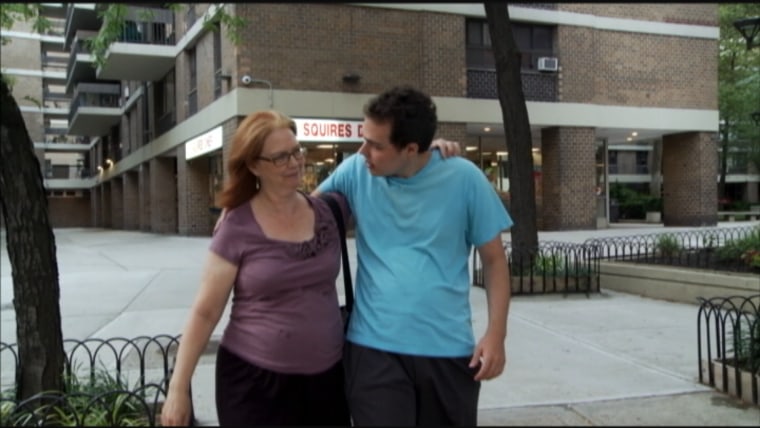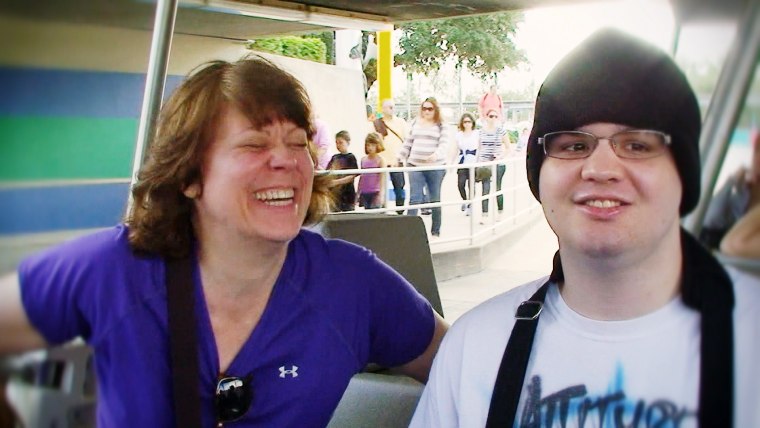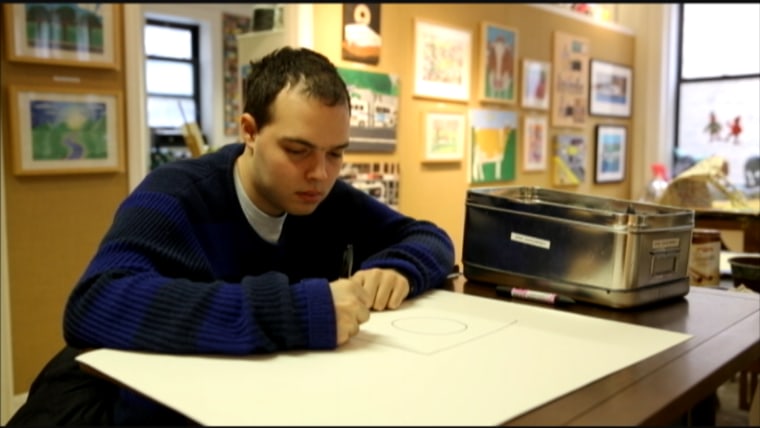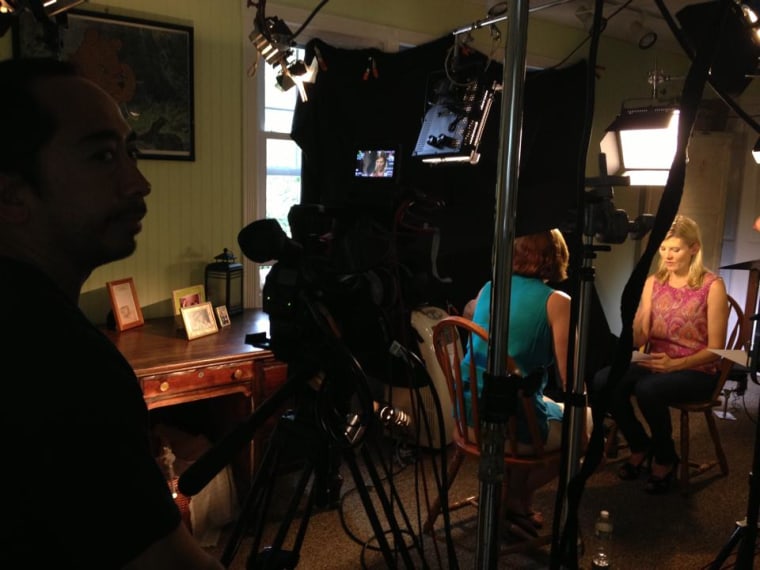This was always going to be a story about moms. Long before I met Mary and Lenore, there was another mom whose story inspired the three-year odyssey that became Dateline NBC’s “On the Brink.”
Almost ten years ago, my cousin, Sarah Donnelly, shared the news that her youngest child had been diagnosed with autism. But she kind of already suspected it. She was very familiar with the early signals for autism – lack of eye contact, difficulty with language, some repetitive behaviors – because her eldest child had been diagnosed three years earlier.

Sarah is nothing if not a planner. Knowing that her children would not be able to care for each other when she and her husband no longer can, Sarah was thinking far down the road. She started to ask herself, “What happens when they grow up?”
Like most people, I only thought about autism as something that happens to children. But the reality is, these children with autism become adults with autism. As Linda Walder, Executive Director of the Daniel Jordan Fiddle Foundation, says in the story, “You don’t outgrow autism.”
Sarah told me that at age 21, her children would have to leave school and “age out” of the services that were helping them make so much progress: occupational therapy, speech therapy, physical therapy. Not only would they lose those critical supports, they would lose the structure of the school day and the comfort of seeing the same faces day after day. For many people with autism, routine and reliability are essential to their sense of stability. If one small thing in their world changes, it can throw the person into a tailspin.
What’s more, Sarah had been looking into programs for adults with autism and found there are very few options available. The adult programs funded with state/federal money that do exist tend to assume a person can communicate with language – something that’s a hallmark challenge of autism. What’s more, there are often long waiting lists to get into adult programs. And making matters even worse, most of these free adult programs aren’t designed to continue growing the skills and abilities of people with developmental disabilities.
It all added up to a future potentially filled with chaos and heartbreak for Sarah, her husband and her children, and for the nearly half million children with autism aging out over the next decade.
It sounded like a story that needed to be told.
I pitched it to Dateline my third week on the job, in February 2012. Executive Producer David Corvo approved it right away and I started searching for families. I felt it was important to find families who represented the “typical” autism experience. But as many families told me throughout the project, “If you meet one person with autism, you’ve met one person with autism.” I was asking a lot: let me follow you and your family for a year or more, through one of the scariest and most stressful times of your life.
With the help of several adult autism advocacy groups, I placed a notice about the story in several email newsletters aimed at families of children with autism. The response was incredible, and powerful. I received hundreds of emails from parents all over the east coast (I’d asked for families in the NYC region), and almost every single one said the same thing: we are in a total panic about our child aging out.
But two emails ultimately stood out: Lenore Kubicsko’s and Mary Clancy’s.

The first time I visited Lenore, she told me about the extremely difficult past from which Nickolas was recovering. He had been in a 24/7 residential facility for several years prior. Lenore and her husband Mike had placed him there as a last resort when Nick’s frustrations escalated to the point where he was harming himself and others. It turned out that being in the facility was making matters worse for Nick. After several dangerous events left him hospitalized, Lenore and Mike decided they would bring him home for good. Lenore explained that Nick needs one-on-one attention in order to learn, so her local public school was sending a teacher to work with him for two hours a week. Eventually, the school district also provided a speech therapist and a physical therapist.
This individualized approach to teaching Nick was very clearly paying off. In that first year that I filmed with the Kubicskos, Nick went from sleeping a lot of the time to being up and interacting with his family and aides. He was even getting out of the house more and more; the guys at the local pizza place and bagel shop got to know him by name. Lenore was ecstatic over how well he was doing and decided he was ready for his first family vacation in years. There was no question where they’d go – Disney World, Nick’s most favorite place.

Nick did so well on that trip that it seemed to prove to Lenore once and for all, that, with the right support, he could do almost anything. But just as she was celebrating this new level of achievement for Nick, her heart was breaking as the days ticked closer to his 21st birthday when he’d lose all the supports that were helping him to fly.
In the meantime, Mary Clancy was already in a near panic. Her son Eric Sadowsky was just months away from turning 21 and aging out of a private school in Manhattan where he was thriving. Like Nick, Eric had had some struggles on the road to finding the right educational fit. But finally, he landed at the Rebecca School, which specializes in teaching children with developmental disabilities. He was there for five years, and made tremendous growth during that time.
It was a financial struggle for Mary and her husband Richard Sadowsky to keep Eric at the school. The tuition is pricey, but after some legal wrangling they were able to get the public school district to pick up the tab.
As the end of his school days drew near, Eric’s anxiety about leaving became more and more evident. He would say he was going to stay at the Rebecca School for five more years. He was so upset and nervous about leaving that he told everyone not to hold a graduation ceremony for him. He was the first student to age out at Rebecca, which made his departure even more upsetting. But his friends and teachers obliged him, and tried to keep things light-hearted. Behind closed doors, though, his principal, Tina McCourt, became very emotional talking about having to say goodbye to Eric.

While everyone was trying to keep a stiff upper lip, Eric seemed the most focused on staying positive. When the call came over the PA that his school bus was outside, he calmly said, “Time to go home,” put on his backpack, and walked out the door.
Mary anticipated that Eric’s transition would be difficult, but she soon found that it was far worse than she imagined. Eric became increasingly dependent on her and frightened of leaving the apartment. In turn, she felt frantic as she searched for any program or activity that might help her son.
The fears that both mothers had for their sons – that they would regress, lose language, sit home alone for months with nothing to do – came true. But neither Lenore nor Mary gave up on their sons. As they’d done their whole lives, they got up each day determined to fight again to get the help their sons needed. As Lenore said, “Moms do what moms gotta do.”
As for my cousin Sarah, her children have not yet aged out. But she’s ready. Several years ago, she and my aunt and uncle started a community-based program in suburban Chicago called Connection of Friends that provides a place for older teens and adults with special needs to gather socially and develop life skills.
In the end, all three moms know they will always be helping to guide their children and ensure they have what they need. And they’re determined to make a difference not just for their kids, but for every person with autism. When Kate Snow asked Lenore what she hopes for the future, Lenore said we all need to stop seeing autism as a “what” but a “who” – meaning each person with autism has his or her own voice, and that each voice counts.

